Product pictures
| Amount Per 0.5 pastry, 71 g | |||
| Calories | 240 Kcal (1005 kJ) | ||
| Calories from fat | 117 Kcal | ||
| % Daily Value* | |||
| Total Fat | 13g | 20% | |
|---|---|---|---|
| Saturated Fat | 6g | 30% | |
| Cholesterol | 15mg | 5% | |
| Sodium | 125mg | 5% | |
| Total Carbs | 27g | 9% | |
| Sugars | 11g | 44% | |
| Protein | 4g | 8% | |
| Vitamin C | 1.5mg | 3% | |
| Iron | 0.9mg | 5% | |
| Calcium | 20mg | 2% | |
* Percent Daily Values are based on a 2000 calorie diet. Your daily values may be higher or lower depending on your calorie needs.
Find out how many calories should you eat.
Ingredients And Nutrition Overview
Best
choice Good
choice Poor
choice Avoid
it!
choice Good
choice Poor
choice Avoid
it!
-
WeightWatchers Points: 5.9, PointsPlus: 7, SmartPoints: 10
WeightWatchers Points are estimated by carbohydrates, fats, protein and fiber in product. They are not an affirmation of better quality or nutritional value of the product or its manufacturer. Only way to count for dieters. Less points are better.
Read more at Weight watchers diet review -
Over 30% of daily saturated fat!
Bad! More 30% of daily saturated fat!
For years Saturated fat was claimed to raise cholesterol levels and give us heart attacks. Today different studies refute this claim. They say, that replacing saturated fat with carbohydrates or refined starch or sugar is not changing the heart disease risk. Not processed carbs nor saturated fats are good for you. Only if you replace it with polyunsaturated fat, you'll get a reduction in heart disease risk. So try to have a balanced diet. -
Convert Salt tsps to Sodium mg easily
Salt (NaCl) is not excactly sodium (Na).
It is not right to use these terms as synonyms.
The FDA recommended limit of sodium is 2,300 mg per day (or even less - about 1500 mg while one is on low sodium diets).
This is much less than the weight of salt.
(5,750 mg per day or 3,750 mg for low sodium diet) and not so convenient to calculate.
Know how much sodium is in your salt - without a calculator:
1/4 tsp salt = 600 mg sodium
1/2 tsp salt = 1200 mg sodium
3/4 tsp salt = 1800 mg sodium
1 tsp salt = 2300 mg sodium -
4 tsp of sugars per serving
This volume includes both naturally occurring from ingredients and specially added sugars.
USDA tells us that last years each American consumed an average 130 pounds of caloric sweeteners per year!
That works out to 30 tsp of sugars per day approximately 480 extra calories!
Just to think: Eating just 200 more calories daily than your body requires for body functioning and exercise leads to a 20-pound weight gain in a year. -
Contains controversial artificial colors
Once upon a time, there were no food colorings. Then folks figured out that food looks better and sells more when it can be enlivened through dyes. For most of food history, the dyes were from natural sources – beet juice for red, turmeric for yellow,etc… However, in the quest to increase color intensity and lower manufacturing costs, cheap artificial dyes were introduced to market. Unfortunately they pose a risk for hyperactivity in children, cancer, and allergic reactions. ----------- Sources: Feingold BF. Hyperkinesis and learning disabilities linked to artificial food flavors and colors. Am J Nurs 1975; 75-5: 797-803. Harley JP, Matthews CG, Eichman P. Synthetic Food Colors and Hyperactivity in Children: A double-blind challenge experiment. Pediatrics 1978; 62: 975-983. Kobylewski S, Jacobson M. Toxicology of food dyes. Int J Occup Env Heal 2012; 18-3: 220-246. McCann D, Barrett A, Cooper A, Crumpler D, Dalen L, Grimshaw K, Kitchin E, Lok K, Porteous L, Prince E, Sonuga-Garke E, OWarner J, Stevenson J. Food additives and hyperactive behavior in 3-year-old and 8/9-year-old children in the community: a randomized, double-blinded, placebo-controlled trial. Lancet 2007; 370: 1560-67. Schab DW, Trinh NT. Do artificial food colors promote hyperactivity in children with hyperactive syndromes? A meta-analysis of double-blind placebo-controlled trials. J Dev Behav Pediatr 2004; 25: 423-434. Sonuga-Barke EJS, Hollis C, Brandeis D, Konofal E, Cortese S, Lecendreux M, Daley D, Wong I, Ferrin M, Sergeant J, Holtmann M, Stevenson J, Danckaerts M, Van Der Oord S, Dopfner M, Dittmann R, Simonoff E, Zuddas A, Banaschewski T, Buitelaar J, Coghill D. Nonharmacological interventions for ADHA: Systematic review and meta-analyses of randomized controlled trials of dietary and psychological treatments. Am J Psychiatry 2013; 170-3: 275-289. Stevens LJ, Kuczek T, Burgess JR, Hurt E, Arnold LE. Dietary sensitivities and ADHD symptoms: Thirty-five years of research. Clin Pediatr 2011; 50:279-293. Williams JI, Cram DM, Tausig FT, Webster E. Relative effects of drugs and diet on hyperactive behaviors: An experimental study. Pediatrics 1978; 61-6: 811-817.
-
For dieters: FoodPoints value is 7
* FoodPoints are calculated by Fooducate based on fats, carbs, fiber, and protein. They are not an endorsement or approval of the product or its manufacturer. The fewer points - the better.
-
Highly Processed!
This product is highly processed. If you'll take a look at its ingredient list, you'll discover new words to add to your vocabulary. Many of theses ingredients are required to increase the shelf life of the product and improve the flavor that disappears when food is not fresh.
-
Contains azodicarbonamide. Learn more
Azodicarbonamide is a popular dough conditioner. It also bleaches the flour (makes it whiter). It's considered safe in the US at up to 45 parts per million, but is banned from use in Europe because studies showed it could cause asthma or allergic reactions. ---- Sources: Kim C, Cho J, Leem J, Ryu J, Lee H, Hong Y. Occupational asthma due to azodicarbonamide. Yonsei Med J. 2004; 45-2: 325-329. Normand JC, Grange F, Hernandez C, Ganay A, Davezies P, Bergeret A, Prost G. Occupational asthma after exposure to azodicarbonamide: Report of four cases. Brit J Ind Med. 1989; 46: 60-62. Vlastos D, Moshou H, Epeoglou K. Evaluation of genotoxic effects of semicarbazide on cultured human lymphocytes and rat bone marrow. Food Chem Toxicol. 2010; 48: 209-214. Ye J, Wang X, Sang Y, Liu Q. Assessment of the determination of azodicarbonamide and its decomposition product semicarbazide: Investigation of variation in flour and flour products. J Agr Food Chem. 2011; 59: 9313-9318.
-
Contains glycerides
Mono and diglycerides are commonly used in processed foods to maintain stability in liquid products and "improve" quality in baked goods. These glycerides could be created using both hydrogenated and partially hydrogenated oils or animal fats. In theory, this may transfer a small amount of trans fats into the product. The glycerides are synthesized into phosphates by reacting with phosphorus pentoxide, a potential environmental hazard. But that's only part of the problem . . . The presence of mono and diglycerides should discourage you from buying a product for more than just these reasons: their inclusion in a product indicates that it is industrially processed. Choose products without mono and diglycerides not only for health reasons, but because you are getting a better quality food item overall.
-
Duck feathers & human hair in here?
L-cysteine, found in this product, is an additive made from duck feathers or human hair. It is used as a dough conditioner and to extend shelf life. There are synthetic versions made from non-animal parts - these are more expensive, but well worth it for consumers who do not want duck feathers or human hair in their food. Check the label. Or better yet, avoid this needless additive. Choose fresh baked breads that use natural preservatives, if any at all. If you have a problem with bread spoilage, freeze your bread and toast or thaw to reheat.
-
Contains artificial flavors. Learn why
Companies add artificial flavors to products to make them taste better. They are created in a lab and the formulations are guarded as trade secrets. Flavorings can compensate for flavor loss during processing, substitute for ingredients, lower production costs and increase shelf stability. Artificial flavorings are cheaper to source than natural flavors and are perceived as "worse" than natural flavors. They are more stable (and usually less chemically complex) than natural flavors. Artificial flavors are not necessarily bad for you from a health perspective. however, people with food sensitivities or allergies may want to avoid artificial flavors if they are unnamed. You can always contact the manufacturer for more information.
-
Natural flavors added. Learn why
Companies add flavorings to make products taste better. They are created in a lab and the formulations are guarded as trade secrets. Flavorings can compensate for flavor loss during processing, substitute for ingredients, lower production costs and increase shelf stability. Natural flavorings are more expensive to source than artificial flavors, but tend to be better received by consumers. People sensitive to MSG, vegans, vegetarians and those with allergies should pay special attention to the phrase "natural flavorings" since glutamates, animal products or allergens may be the source of natural flavors. You can always contact the manufacturer for more information.
-
Contains calcium propionate. Learn more
Calcium propionate (or calcium propaonate) is a preservative that inhibits mold and bacterial growth. Considered safe, but in the early 1990's it was linked to attention deficit disorder in children.
-
What is Sodium Stearoyl Lactylate?
Sodium Stearoyl Lactylate is a chemical similar to lactic acid used in the processing of food. The FDA and consumer organizations have found it safe. We don't think it's dangerous, however, it is an indicator that the product is processed. We like that it's biodegradable, but still . . . it provides no nutritional value and few consumer benefits. When buying food, keep in mind that the presence of Sodium Stearoyl Lactylate means that this item is processed. It makes bread look big and fluffy, icing look light and pillowy, and reduces the amount of fat and sugar needed in baked goods. Sodium Stearoyl Lactylate makes processed food cheaper, more beautiful and gives it a more appealing texture. We recommend avoiding it if because we like food to be processed as little as possible . . .
Allergens
Gluten Allergy, Wheat Allergy, Eggs Allergy, Lactose Allergy, Milk Allergy, Soy Allergy, Peanuts Allergy
Bear claw Ingredients
Bleached Wheat Flour Enriched (Niacin, Reduced Iron, Thiamine Mononitrate, Riboflavin, Malted Barley Flour, Ascorbic Acid, Folic Acid), Granulated Sugar, Palm Oil (with Mono Diglycerides, Polysorbate 60, Citric Acid Added as a Preservative), Water, Eggs, Yeast, Whey Powder, Dry Milk, Soy Flour, Invert Sugar, Wheat Flour (DATEM, Dextrose, L-Cysteine, Azodicarbonamide (ADA), Enzymes), Salt, Vanilla Flavor, Filling (Water, Modified Food Starch, Egg Whites, Natural & Artificial Flavor, FD&C Yellow 5, Yellow 6, Red 40, Red 3, Blue 1, Blue 2), Potassium Sorbate & Calcium Propionate (Added to Preserve Freshness), Peanuts, Sodium Stearoyl Lactylate.
You Might Also Like
% RDI of Main Nutrition Facts
12%
of RDI* (240 calories) 71 g
-
Cal: 12 %
-
Fat: 20 %
-
Carb: 9 %
-
Prot: 8 %
-
0%25%75%RDI norm*
Calories Breakdown
- Carbs (44.8%)
- Fat (48.5%)
- Protein (6.6%)
Get Your Recipe of Health!
Follow RecipeOfHealth on Facebook!

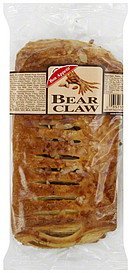
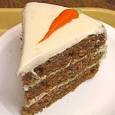

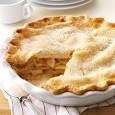


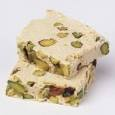

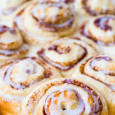
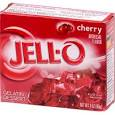
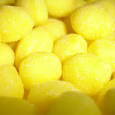


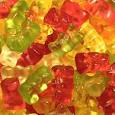













Add your comment